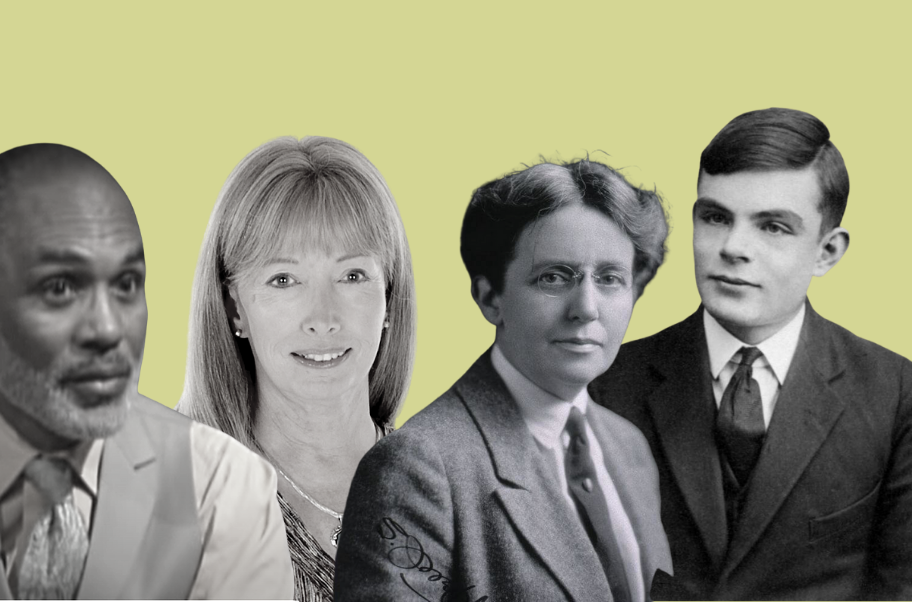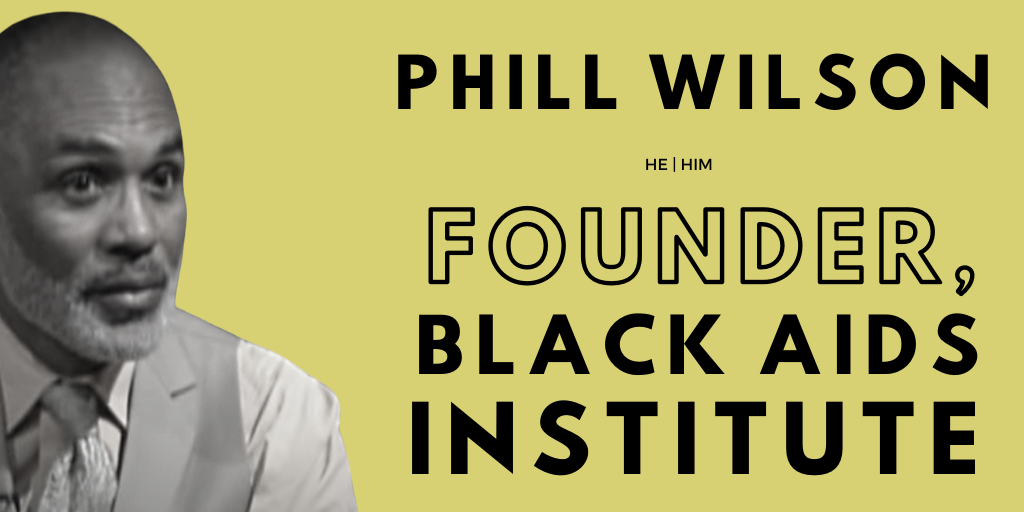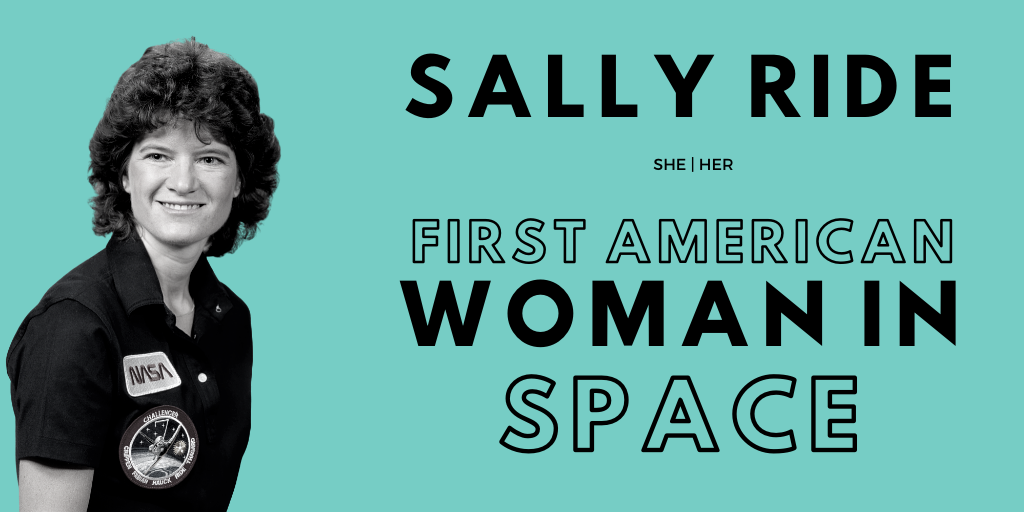7 LGBTQ individuals who helped push science forward
Here are seven LGBTQ scientists, activists, and educators whose scientific inventions, outreach, and research helped make the world a better place.

Here are seven LGBTQ scientists, activists, and educators whose scientific inventions, outreach, and research helped make the world a better place.

There are many, many LGBTQ scientists and science communicators who have made the world a better place. We’ll keep featuring and celebrating them as time goes on.
In the meantime, here are seven LGBTQ scientists, activists, and educators whose scientific inventions, outreach, and research helped make the world a better place.

Sara Josephine Baker (November 15, 1873 – February 22, 1945) was an American physician noted for her contributions to public health, particulary in New York City’s immigrant communities.
Her work centred on preventative health and had a lasting impact on poor mothers and children in the underserved communities in which she worked. Dr. Baker linked poverty to poor health outcomes, especially in newborns. When she retired in 1923, NYC had the lowest infant mortality rate of any major U.S. city due to her efforts.
Dr. Baker is also known for twice tracking down Mary Mallon, a.k.a. Typhoid Mary, an aysymptomatic carrier to typhoid fever who is believed to have infected 53 people with typhoid fever in the U.S, three of whom died.

Alan Turing (June 23, 1912 – June 7, 1954) was a ground-breaking English mathematician, computer scientist, and theoretical biologist.
Of all his achievements, it is likely his code-breaking work at Bletchley Park in Buckinghamshire during WWII that he is best known for. In 1939, he began a full-time job at Bletchley, working on top-secret projects that deciphered German codes sent to allies.
His work focused on cracking messages sent by the German Armed Forces on a machine called The Enigma. Turing was instrumental in the invention of a device called the Bombe, which was created in collaboration with Gordon Welchman. It helped make code-breaking easier, allowing Bletchley officials to read German Air Force signals and assist war efforts.
In addition to countless other code-breaking innovations, Turing invented the universal Turing machine, which is considered to be the starting point for stored-memory computers. His work at the National Physical Laboratory is regarded as the predecessor of the modern computer.
In 1952 Turing was arrested for homosexuality, which was then considered illegal in Britain. He was found guilty of ‘gross indecency,’ but avoided prison by agreeing to undergo a horrific chemical castration.
Turing was found dead in his home in June 1954 at the age of 41 in an apparent suicide. On Christmas Eve 2013, the Queen signed a posthumous pardon for him.
His life was chronicled in the 2014 film The Imitation Game, starring Benedict Cumberbatch.

PHOTO: SCREEN GRAB FROM A YOUTUBE VIDEO OF WILSON DISCUSSING 30 YEARS OF AIDS IN THE U.S. (SOURCE).
Phill Wilson is an American activist and former CEO of the Black AIDS Institute, which he founded in 1999. He is also a prominent HIV/AIDS activist.
Wilson began his career in AIDS activism when he and his partner, Chris Brownlie, were diagnosed with HIV in the early 1980s, when the epidemic was in its early stages in the U.S.
During that time, significant misinformation was being spread about the disease — namely, that it was a gay disease, and with outreach focusing on gay, white communities. Wilson believed AIDS was impacting the Black community in ways that were being ignored, and focused his efforts there.
He has served on many chairs and boards to help influence AIDS policy, raise research funding, and to spread awareness, including a role as the Director of Policy and Planning for the AIDS Project in Los Angeles and acting as the co-chair of the Los Angeles HIV Health Commission.
In 2010, he was appointed to President Obama’s Advisory Council on HIV/AIDS.

Ben Barres, MD, Ph.D. (Sept. 13, 1954 – Dec. 27, 2017) was the chair of the neurobiology department at Stanford University School of Medicine and the first openly transgender scientist in the National Academy of Sciences.
Barres’ research into the important role glial cells play in all stages of a neuron’s development is said to have revolutionized the study of neuroscience.
He was known for his rigorous work ethic, often in the lab until 3 a.m.
In an article by Stanford University, Barres is described as a devoted mentor who championed for women in science.
Dr. Barres died of pancreatic cancer at the age of 63 in 2017. In 2018, his posthumously published memoir, The Autobiography of a Transgender Scientist, was published. It documents his 1997 transition from female (Barbara) to male, and the unique insight gained through working as a neuroscientist as both a woman and then a man.
“When I decided to change sex 15 years ago I didn’t have role models to point to,” he said in 2012.
“I thought that I had to decide between identity and career. I changed sex thinking my career might be over. The alternative choice I seriously contemplated at the time was suicide, as I could not go on as Barbara.” In the same interview, he added: “young people should never let anyone make them feel bad about who they are — their differences are often their greatest advantages in life.”

Alan L. Hart (October 4, 1890 – July 1, 1962) was a physician, researcher, and radiologist. Dr. Hart helped implement the use of x-rays in tuberculosis (TB) detection and created life-saving TB screening programs.
In the winter of 1917-1918, he was one of the first female-to-male transgender people to undergo a hysterectomy, living the rest of his life as a man.
Born Alberta Lucille Hart, Alan enrolled in Albany College in 1908, and transferred to Standford two years later, where he established the university’s first female debate club.
After finishing college Hart attended Oregon Medical School and, in 1917, became the first woman to receive the Saylor medal for achieving the highest standing in every department in the entire school.
In 1918, not long after his transition, he married Inez Stark.
The couple was forced to move frequently when Hart’s gender was questioned. This made it difficult to establish a medical practice and, in 1923, Stark filed for divorce.
He married Edna Ruddick in 1925. Three years later, Hart received his master’s degree in radiology from the University of Pennsylvania and became director of radiology at Tacoma General Hospital.
In the early 1900s, X-rays were used to detect tumors and fractures, but Hart was interested in their ability to screen for TB, which was one of the top killers in the U.S. at the time. He became an expert on tubercular radiology and published numerous papers on the value of X-rays as a TB detector.
The use of X-rays enabled early detection, which significantly reduced death rates.
Hart died from heart failure in 1962. When Edna died in 1982, she left most of her estate to the Medical Research Foundation of Oregon in memory of her husband.

Lynn Conway (@lynnconway) is a University of Michigan professor of electrical engineering and computer science, emerita.
She is also a transgender activist.
Conway worked at IBM in the 1960s and is described as a “pioneer of microelectronics chip design.” She is credited as the developer of the generalized dynamic instruction handling, a key advance used by most modern computer processors to enhance performance.
Her groundbreaking career at IBM, however, was cut short.
The company cut her research short in 1968 upon learning of her plans to transition from male to female.

Sally Kristen Ride (May 26, 1951 – July 23, 2012) was a physicist and, in 1983, became the first American woman, and the third woman overall, in space. To this day, she remains the youngest person to have been to space, having made the journey at age 32.
Ride flew on NASA’s oribter Challenger twice before leaving the organization in 1987. She then worked at Stanford University’s Center for International Security and Arms Control and at University of California, San Diego as a professor of physics.
Ride kept her personal life private and many did not learn she had a female partner, Tam O’Shaughnessy, for 27 years, until reading about it in her 2012 obituary, the Washington Post reports.
